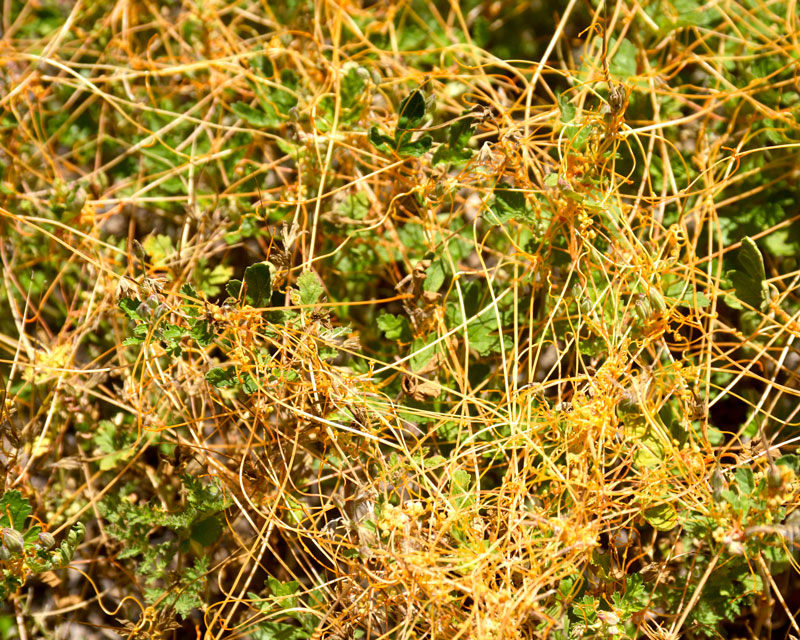Invader into the garden or wildscape
The first time I encountered dodder was in a giant greenhouse in Akron, Ohio. They were growing chrysanthemum cuttings by the hundreds of thousands and somehow this plant had gotten a start on one side of one bench. We were on a horticultural field trip with one of my classes from Ohio State, and I quickly found out that I was the last plant guy to learn about this unusual parasite.
Later I saw a quarter-mile of Texas roadside blanketed by dodder near Independence, Washington County (near Brenham).

The details of this plant are simple…
• It is an annual.
• Seeds germinate in the soil in spring.
• The seedlings have just enough chlorophyll to support themselves for 5 or 10 days, until they’re 10 or 12 inches tall.
• Plants that are growing near suitable host plants will force their adventitious roots (called “haustoria”) into the tender stem tissues of the hosts.
• Eventually the roots of the dodder plant will wither away and all sustenance will come from the host.

• Small, bell-shaped flowers develop in late summer and numerous seeds are produced.
• The dodder plants are killed by the first freeze and the cycle begins again.
Dealing with dodder…
• Pull all young seedlings before they attach to the host plants.
• Trim out stems that have dodder attached.
• Remove infested plantings before dodder blooms and goes to seed.
• If you feel the need to use a herbicide, glyphosate-only weedkillers will eliminate both the dodder and the host plants without leaving residues in the soil.
